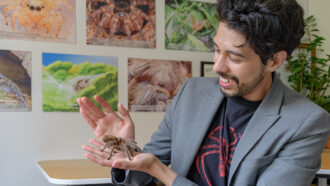Invertebrates are pretty clever, but are they conscious?
It’s a hard question to answer, but scientists are trying to find out
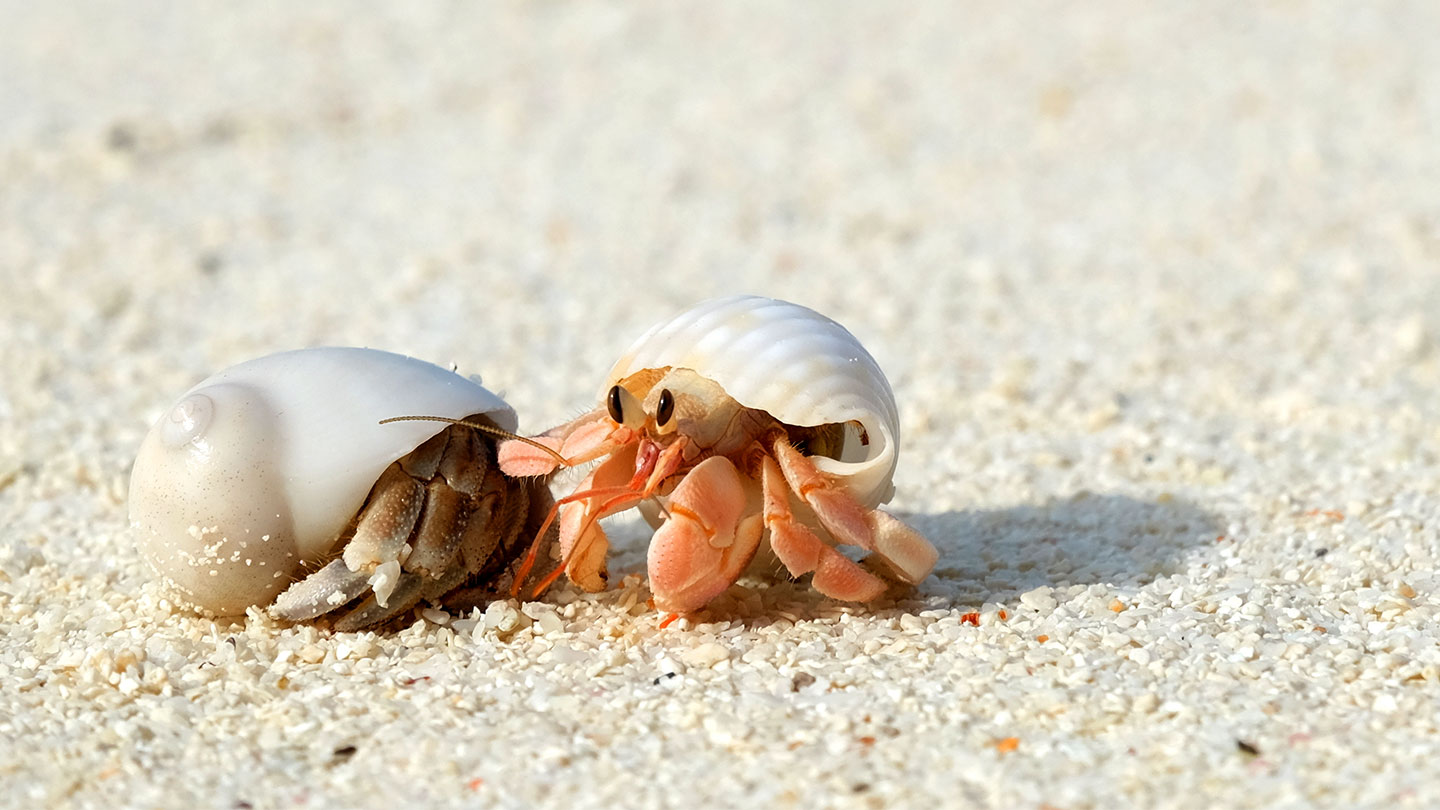
Experiments with hermit crabs and other invertebrates have led some scientists to believe these animals exhibit evidence of consciousness.
Sophie Dover/iStock/Getty Images
We tend to think that animals like dogs, cats and horses experience the world somewhat like we do. But what about animals that aren’t mammals? Do beetles enjoy the feeling of a warm sun on their backs? Do ants fear being stepped on? Do spiders get excited when they catch prey in their webs?
Beetles, ants, spiders and other animals that don’t have backbones are called invertebrates. And there are a lot of them. Ninety-seven percent of all animals are invertebrates. Insects, scorpions and worms are examples. So are lobsters, crabs, shrimp, squid and octopuses. Invertebrates are very different from humans in many ways. But just how different? Do they have consciousness, for example?
Scientists and philosophers are trying to work out how to find answers for such hard questions.
“I want to get into the minds of the animals. I want to know what it feels like,” says Rafa Rodríguez. “That’s doomed to failure. But I want to get as close as possible.” Rodríguez is a biologist at the University of Wisconsin–Milwaukee. The closer scientists like him get into the minds of invertebrates, the closer they’ll come to knowing if these animals have consciousness.
Not all researchers agree on how to define consciousness. Some people use the word “sentience” — being able to feel things. Others use “self-awareness” — a term that means understanding you are an individual. Both describe the ability to have experiences and know that you’re having them.
Jennifer Mather has a simpler definition. This biologist studies octopuses at the University of Lethbridge in Alberta, Canada. Mather says that basically, consciousness means “somebody’s home.”
Despite working with different definitions, scientists are making progress toward learning if invertebrates are conscious.
Experiments have hinted that insects, crustaceans and other critters can feel things such as pain and fear. And invertebrates like spiders show excellent memory and planning skills. Those are all features of consciousness in people.
But the findings raise an even deeper question: Can we use our own experiences to decide what consciousness looks like in critters so different from us?
Anybody home?
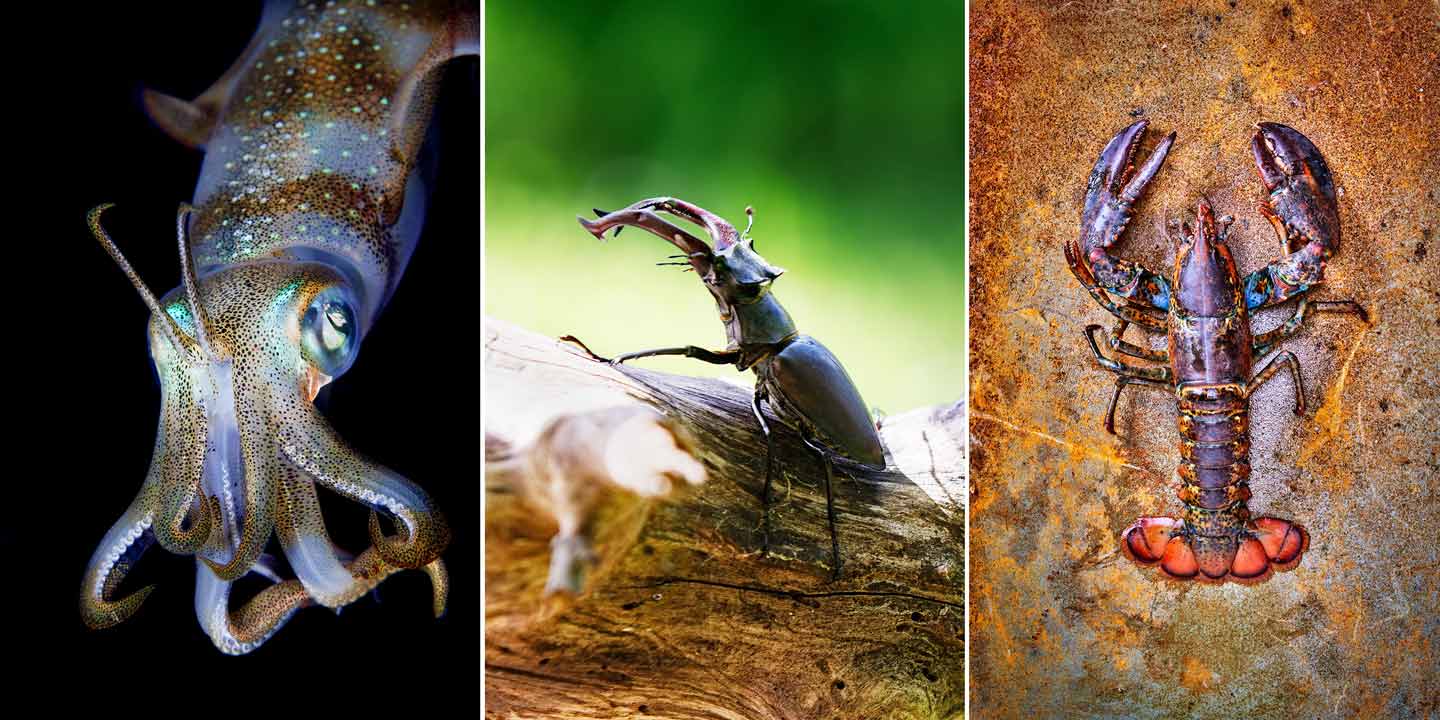
Invertebrates — including squid (left), beetles (center), lobsters (right) and many other species — make up 97 percent of all animals on Earth. Scientists now want to know how self-aware these critters are about their place in the environment.
Making trade-offs
Scientists often use pain as a stand-in for consciousness. If an animal can feel pain, then it’s safe to say it’s conscious, explains Heather Browning. She’s a philosopher at the University of Southampton in England. She studies animal consciousness there.
But how do you know if an animal feels pain? When it pulls away to avoid something that might harm it, this may be just a reflex. This is when the body responds to a stimulus without consciously thinking about it. When something consciously experiences pain, its behavior changes in more deliberate ways.
For instance, if you burn your hand on a hot stove, you might yank your hand away by reflex. But because you also consciously experienced that pain, you might choose to run your hand under cool water — or not touch a hot stove again.
Barry Magee and Robert Elwood work at Queen’s University Belfast in Northern Ireland. While working with hermit crabs, these biologists found a clever way to tell the difference between reflexive and conscious reactions to pain.
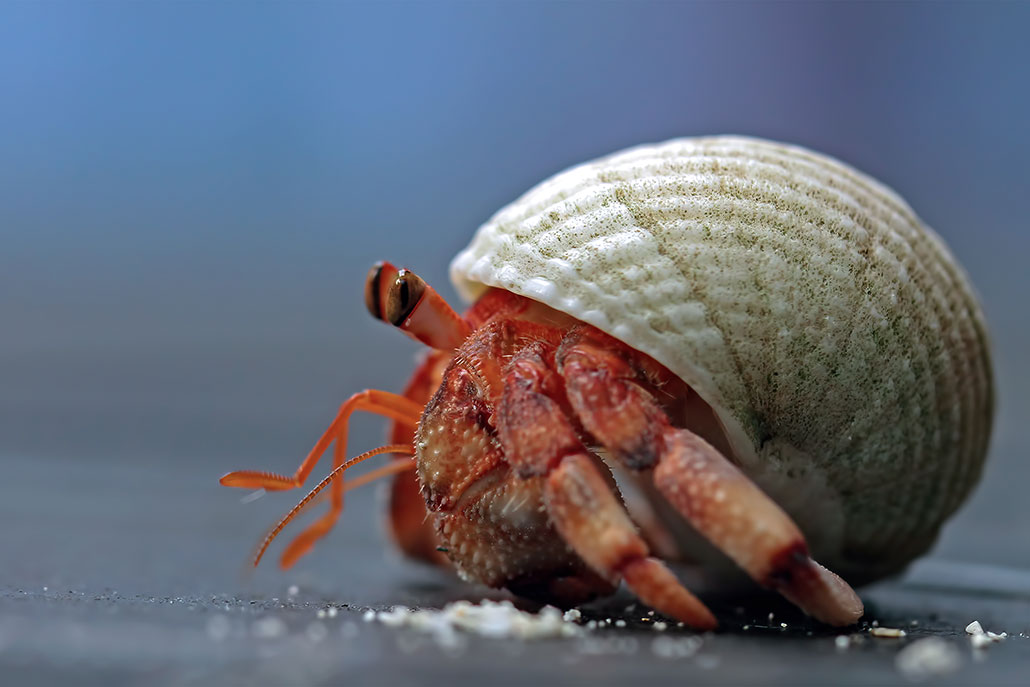
Hermit crabs don’t grow shells of their own. They choose their shells from among those shed by other critters. When they find a good shell, they stick with it. When Magee and Elwood gave crabs small electric shocks, the crabs left their shells to find others. But if a crab was in a really good shell, it took more electric shocks to make it leave.
When the researchers put the scent of a predator in the water near the crabs, it took even more shocks for them to give up the safety of their shell to look for shelter that didn’t come with shocks. Magee and Elwood shared this research in Behavioural Processes back in 2016.
These data show that crabs don’t respond to pain just by reflex, the researchers now argue. Instead, each crab is making a trade-off. It’s deciding if it should take the risk of encountering a predator or stay in the shell and possibly get shocked again.
“One of the best theories about why sentience evolved,” says Browning, “is so that animals could make these kinds of trade-offs.” A brain that’s not conscious — not sentient — wouldn’t be able to make these kinds of decisions, she says. It would just respond by reflex. A hermit crab would always leave its shell after a shock, even if that wouldn’t be best for its survival.

Fearful flies and pessimistic bees
Invertebrates might be able to feel not just pain, but also emotions — such as fear. A 2015 study in Current Biology looked at how fruit flies reacted to a threatening shadow flying overhead. The flies jumped and sometimes froze. These reactions, the researchers say, suggest the flies are experiencing something similar to what humans would call fear.
And a 2011 study hints that honeybees can be pessimistic. Pessimism is the tendency to expect that something bad will happen.
Bees love sugary things. Researchers trained honeybees to associate one odor with a sugary treat. They were taught to link another odor with a foul, bitter taste. When the bees smelled the odor that meant a tasty treat, they put out their tongues for feeding. When they smelled the odor linked to a nasty taste, they pulled in their tongues.
Then the researchers put half of the bees in a machine that shook them. It wasn’t enough to harm the bees. But it was meant to mimic the stressful experience of an attack on the hive. Afterward, all bees were then presented with three new odors.
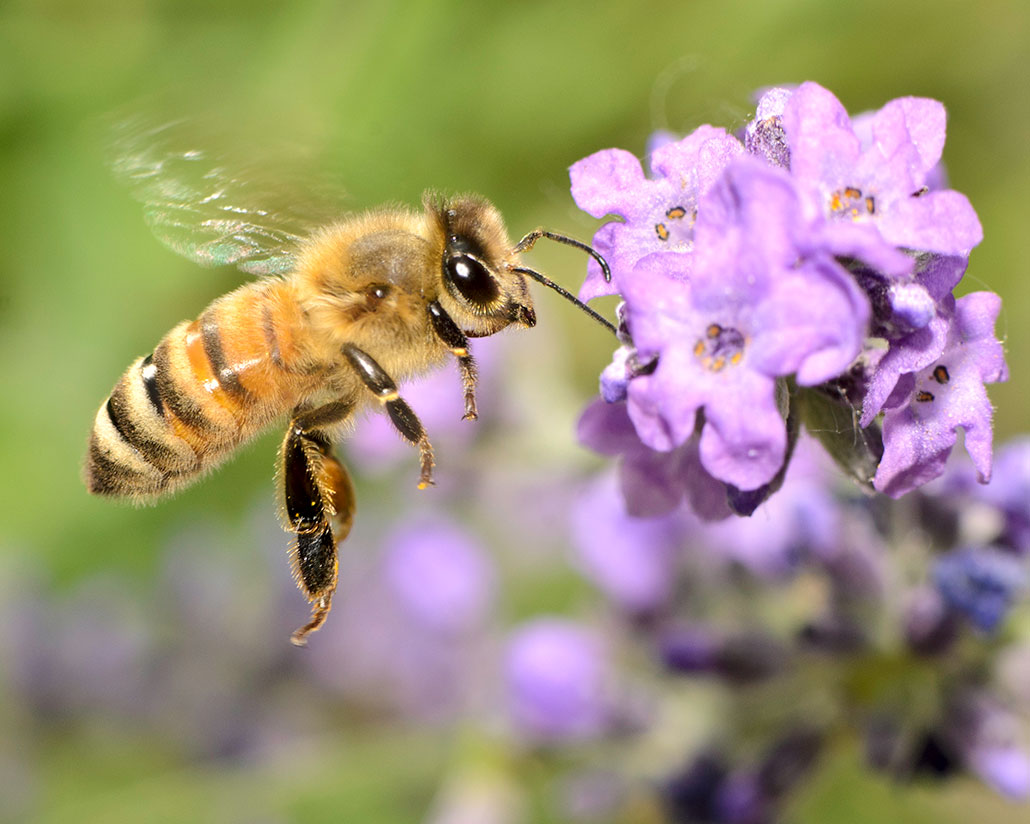
The bees hadn’t learned to link these new odors with anything. But bees that had been shaken were much more likely than non-shaken bees to respond to the new odors by pulling in their tongues. They seemed to expect the food to be nasty, even though they had not been trained to.
This hints that the bees that had just experienced something bad — the shaking — were more likely to expect more bad things would come. That is, the shaken bees were showing pessimism. Shaken bees also had lower levels of dopamine and serotonin. In humans, these brain chemicals help regulate mood. In people, low levels of these can cause someone to feel depressed or unhappy. Researchers shared their findings in Current Biology.
Stephen Buchmann is a pollination ecologist at the University of Arizona in Tucson. He studies bees and wrote the book, What a Bee Knows: Exploring the Thoughts, Memories, and Personalities of Bees. Buchmann is not ready to say that bees have emotions like ours. But he does think they can become anxious.
He bases that view, in part, on an experiment with robotic spiders. Researchers in England placed the mechanical critters in an area where bumblebees foraged. From time to time, a fake spider would grab a bee. The spider would hold the bee for a couple of seconds, then release it.
This near-death experience had a big effect on the bees. Those grabbed by the spider approached flowers more cautiously later on. They were skittish and jumpy. They even avoided flowers without spiders.
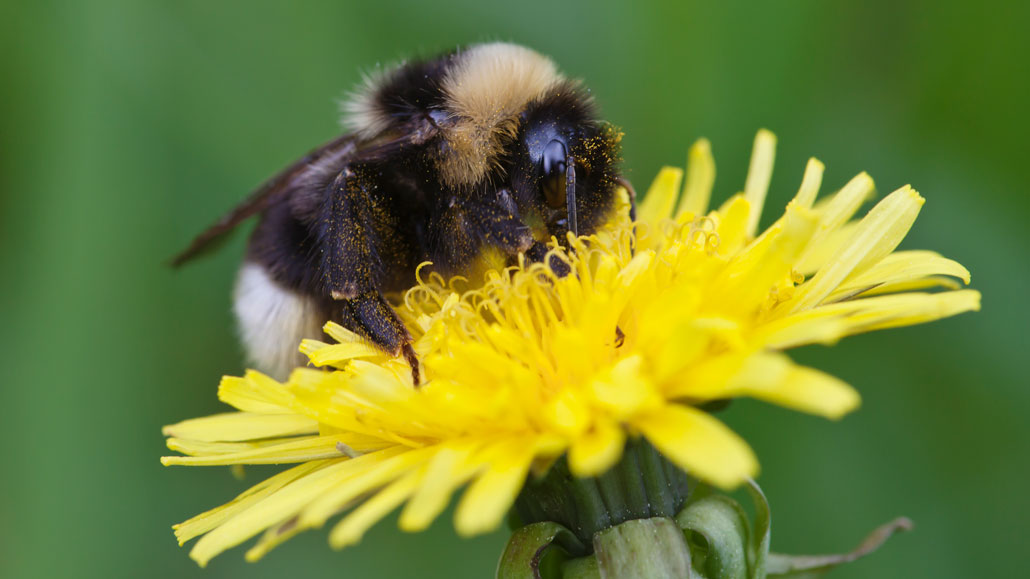
Who raided the pantry?
Another way to investigate consciousness is to see if animals can remember the past and plan for the future. Memory and planning are thought to be important signs of consciousness.
Spiders, for instance, have very good memories. In one experiment, Rodríguez replaced webs of spiders that had food in them with webs with no food. The spiders looked for where the food had been in the old webs. And they kept looking, even when Rodríguez put new food in the web. Spiders looked longest in the places where the best food had been.
This means that spiders notice when their environment doesn’t match their memories of it. Rodríguez sees that as a sign of higher intelligence. His team shared these results in Behavior back in 2013. This alone does not prove spiders are conscious, Rodríguez says. But it’s what he calls a “building block” of such evidence.
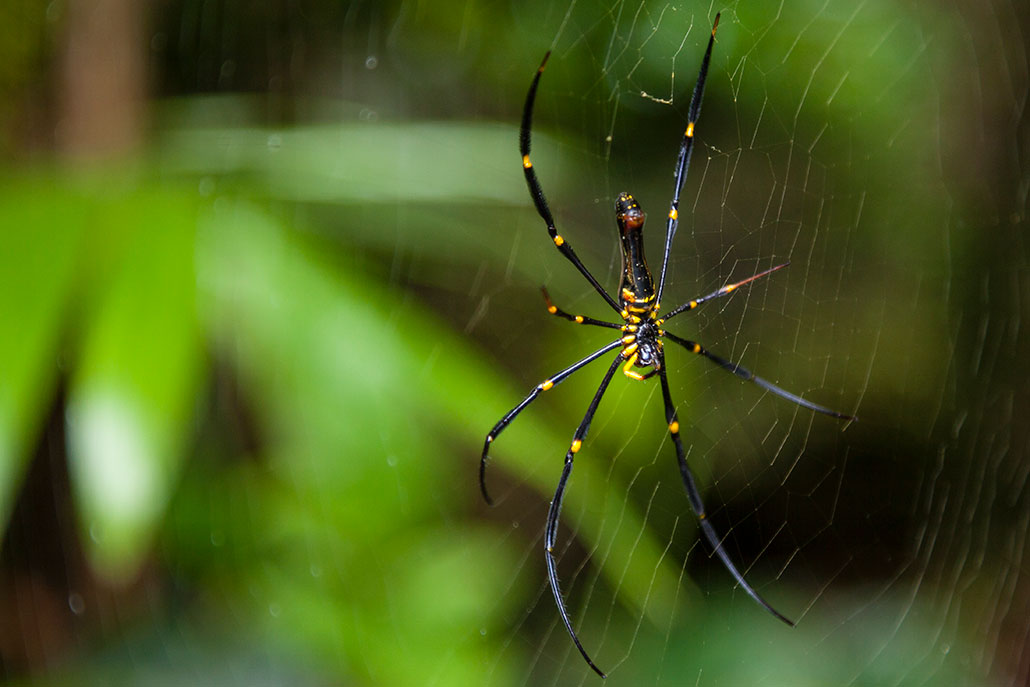
There are more building blocks. For instance, research has shown that spiders can plan ahead.
In one experiment, researchers placed jumping spiders on a tower surrounded by water. These spiders have very good vision. From the tower, the spiders could see two boxes. One contained dried leaves. The other held their favorite food. To reach the food without getting wet, the spiders had to climb down the tower, then choose a path to the meal.
Most spiders chose the path that led to the food — even though they had to first move away from the food and bypass another path. They only could have gotten the information they needed by looking from the tower. This shows that the spiders planned their route in advance. Researchers published these findings in 2016 in the Journal of the Experimental Analysis of Behavior.
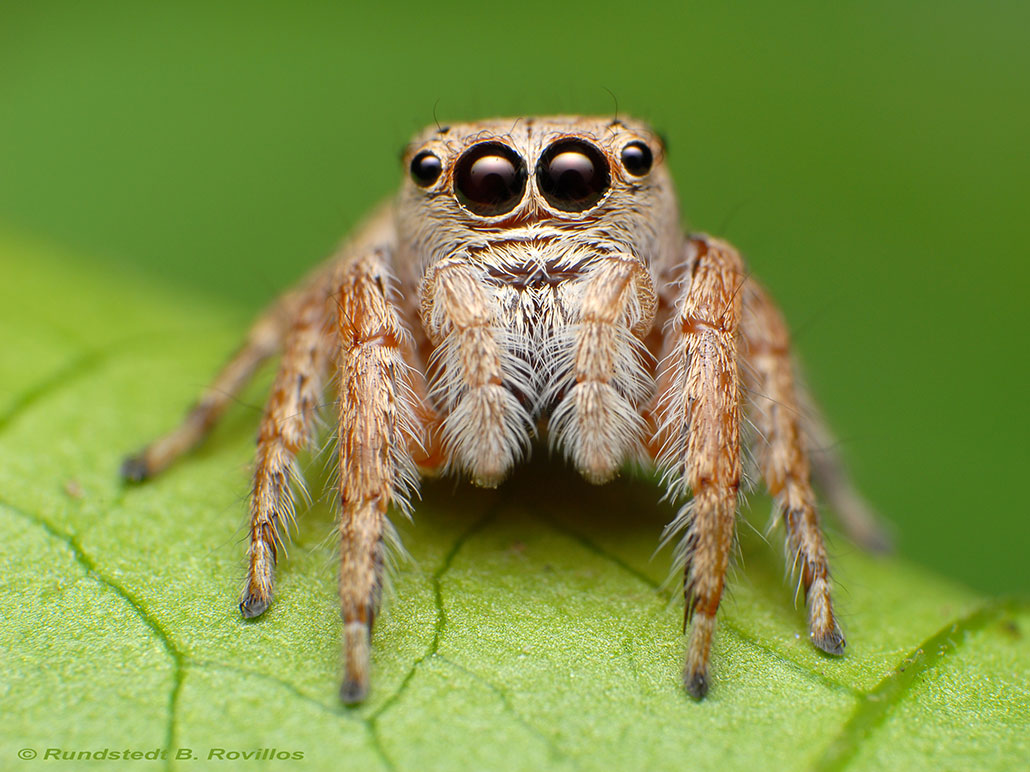
Original ideas
For spiders, behaviors like building webs are instinctive. That means this behavior is built in to their brains. They don’t have to learn it and they don’t have to figure it out on the spot.
But when a problem emerges that their instincts can’t solve, spiders may be able to “break the programming” to find a new and creative solution, Rodríguez says. Being able to make such purposeful decisions — not just acting on instinct — is thought to be a hallmark of consciousness.
Rodríguez designed an experiment to find out if spiders have that ability.
He put a bunch of mosquitoes in spiders’ webs at the same time. (This almost never happens naturally.) He wanted to see how the spiders would respond. Would they rush around trying to secure all the mosquitoes in their webs? Would they give up on some of the insects and focus on others?
Rodríguez is still analyzing data from this experiment. If the spiders respond just by reflex or instinct, then all the spiders should approach the problem in the same way — or at least similar ones. But if various spiders handle the problem differently, that would hint that they’re figuring it out as they go.
That would be a big clue that spiders can make conscious decisions.

Educators and Parents, Sign Up for The Cheat Sheet
Weekly updates to help you use Science News Explores in the learning environment
Thank you for signing up!
There was a problem signing you up.
Where consciousness came from
How animals behave can tell us a lot about their consciousness. But to decide if invertebrates are conscious, experts also look at the animals’ brains. Invertebrate brains differ a lot from our brains and those of other mammals. But some researchers believe invertebrates may well have the brainpower for consciousness.
Scientists have always thought consciousness originated in a part of the brain known as the cortex. This area plays a role in higher-level thinking. It’s responsible for things like memory, decision-making, reasoning and language.
But Björn Merker has argued that consciousness didn’t originate in the cortex. Research by this Swedish neuroscientist and others has found that children who were born without a cortex still are conscious.
One study showed such children could recognize familiar people and interact with their families. One child began to cry when her babysitter cried. When an object she was looking at was moved behind her, she turned around. This makes it seem likely that the cortex is not needed for consciousness. Instead, Merker thinks consciousness may have begun in a much older part of the brain: the midbrain.
In 2016, Andrew Barron and Colin Klein noted that if Merker is right, then insect brains may be capable of self-awareness. Barron studies bee brains at Macquarie University in Sydney, Australia. Klein is a philosopher of consciousness at the Australian National University in Canberra. The pair made their case for insect self-awareness in the Proceedings of the National Academy of Sciences.
Insect brains lack a cortex. They do, however, have structures similar to our midbrain. And those structures have a lot of processing power, Barron says. At least enough that an insect could have a sense of its own body and how its body moves through its environment.
Barron and Klein think that human consciousness may have evolved from these same brain structures. But consciousness didn’t have to evolve just once or in just one way. Sometimes the same feature evolves separately in more than one type of organism. This is called convergent evolution.
Flight is a good example of that, says Marlene Zuk. She’s an evolutionary biologist at the University of Minnesota in St. Paul. Birds and bats both developed the ability to fly. But they did it separately. “Similar evolutionary pressures can produce similar solutions,” says Zuk. “I don’t see why the same thing can’t be true of consciousness.”
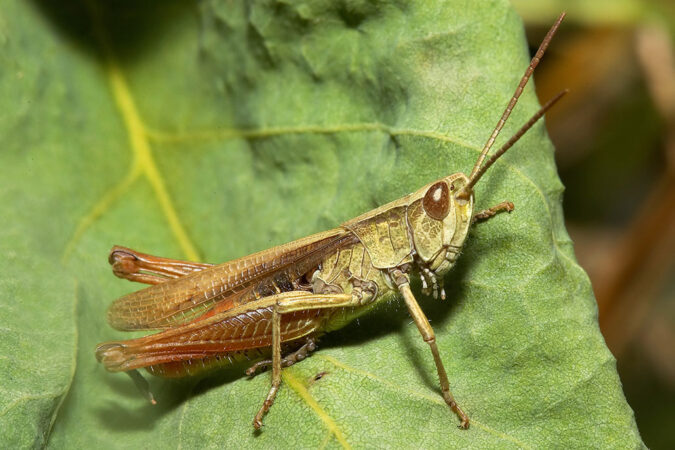
Not just about me
One reason it’s so hard to determine whether invertebrates have consciousness is because they differ so much from us. We tend to compare other animals to ourselves. We think they’re intelligent if they’re like us. We decide if they’re conscious the same way — testing whether they experience feelings or a sense of self the way people do.
This is a mistake, says Zuk. She works with lots of insects, especially crickets. “Insects are not just little people,” she says. They experience the world in very different ways because they are different.
For example, humans rely mostly on vision to sense our environments. Most insects rely more on sound or smell. Animals that experience the world so differently from us may experience consciousness differently, too.
If we want to know if invertebrates are conscious, scientists must design experiments tailored to the species they’re studying, Rodríguez says. Think of the way his memory tests used foods that spiders liked to eat. Or how his planning experiment was based on jumping spiders’ good vision. Doing this with more invertebrates will require a detailed understanding of how those animals sense their world, where they live, what they eat and other aspects of their lives.
In the end, we may never know for sure if invertebrates have consciousness, says Zuk. That doesn’t mean we shouldn’t try.
And whether or not we can prove invertebrates are conscious, we still should be thoughtful of them, says Scott Hoffman Black. He’s the executive director of the Xerxes Society. That’s an group based in Portland, Ore., that focuses on invertebrate conservation.
“I’m not saying don’t swat that mosquito that’s biting you,” Black says. “We all kill insects. We kill them with our cars when we drive. We step on insects we never knew were there.” But we do need to be thoughtful about how we treat these animals, he says: We must not disregard them.
